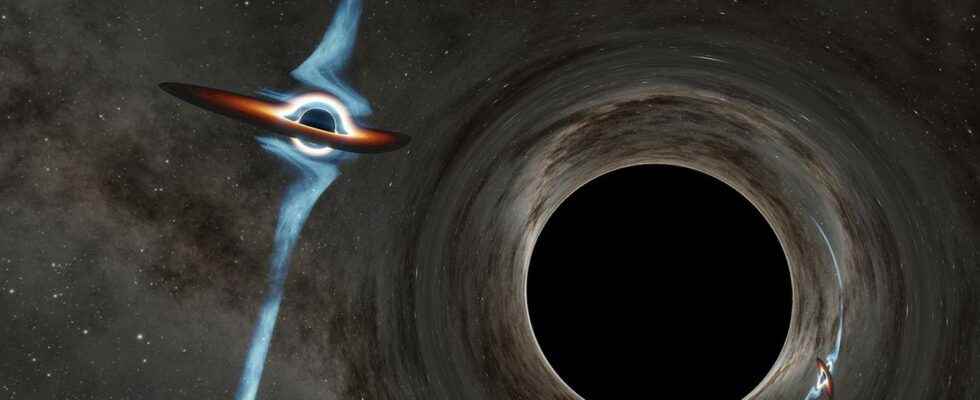Both studies of the precise shape of gravitational waves detected on Earth by Ligo and Virgo that the images of M87* taken by the members of the collaboration Event Horizon Telescope provided us with very convincing arguments for the existence of black holes, although not yet decisive. We also have even less reason to doubt that behind the active cores of galaxies hide from supermassive black holes containing from one million to several billion masses solar.
However, we know in particular because of the images taken with the telescope Hubble that there are collisions between large galaxies and we have every reason to believe that all large galaxies contain supermassive black holes. Calculations as well digital than theoretical, for example based on the kind of friction gravitation that can exert a gas ofstars in one galaxy on another star crossing it, show that during the merger of two large galaxies, their respective supermassive black holes may end up sedimenting, so to speak, at the core of the resulting galaxy, so that one should be able to observe galaxies containing two supermassive black holes at their core.
Jean-Pierre Luminet, research director at the CNRS and Françoise Combes, professor at the Collège de France, tell us about black holes. © Hugot Foundation of the College de France
A metronome blazar
This has been the case for some time, as proven by a team ofastrophysicists in a publication that can be read on arXiv and that carries on the blazar PKS 2131-021 located about 9 billionlight years of the Milky Way. Recall that according to Unified Model of Active Galaxy Nuclei (AGN) which recently received a new justificationblazars are simply quasarsso spinning supermassive black holes accreting a lot of matter and releasing for this reason monstrous waves ofenergywhose jets of matter are directed by chance in our direction or close to it.
As explained in a press release from Jet Propulsion Laboratory of the NasaPKS 2131-021 is one of the 1,800 blazars that a group of researchers from the legendary Caltech in Pasadena, known in particular for its Nobel Prizes in physical Kip Thorne and Richard Feynmanmonitor with theradio observatory of Owens Valley in Northern California. The astronomers had been studying it for 13 years as part of a general exploration of blazar behavior. But this particular blazar exhibited a strange behavior: its brightness showing regular ups and downs as predictable as the ticking of a clock.
A presentation of the discovery made with the blazar PKS 2131-021. It is a black hole surrounded by an accretion disk with relativistic jets of matter oscillating because the blazar forms a pair with another black hole. © Caltech
A black hole merger in 10,000 years
This is Roger Blandford, co-author with Kip Thorne of an essential physics treatise and above all a specialist in black hole physics, who proposed almost 45 years ago with his colleague Roman Znajek one of the best models explaining quasar jets which managed to understand what was happening in the case of PKS 2131- 021, namely that it was part of a binary black hole. The almost perfectly sinusoidal oscillations in the brightness of the blazar were due to its movementthe dance he performs in orbit with his companion.
Not only were we in front of the second solidly established example of the existence of a binary supermassive black hole at the heart of a galaxy (the first is OJ 287), but it breaks a record because the studies combining in the end 45 years of observations in various ways of PKS 2131-021 showed that we were in the presence of the shortest orbital period for this kind of star, only about two years. The diameter of the orbit would then be 10 to 100 times smaller than in the case of OJ 287.
The two stars must already lose significant amounts ofgravitational waves which, as in the case of stellar black holes detected with Ligo and Virgo, will lead them to merge. But that won’t be until about 10,000 years from now. Humanity will therefore not be able to attend the event with the eLisa detector. It is thought that about 100 million years must elapse between the start of the merger of two galaxies and the final merger of their supermassive black holes. In the case of PKS 2131-021, each of the compact bodies involved is estimated to contain hundreds of millions of solar masses. let’s remember that the central black hole of the Milky Way only contains a little over 4 million.
Françoise Combes, professor at the Collège de France, tells us about supermassive black holes. © Ecole Normale Supérieure, PSL
Interested in what you just read?
